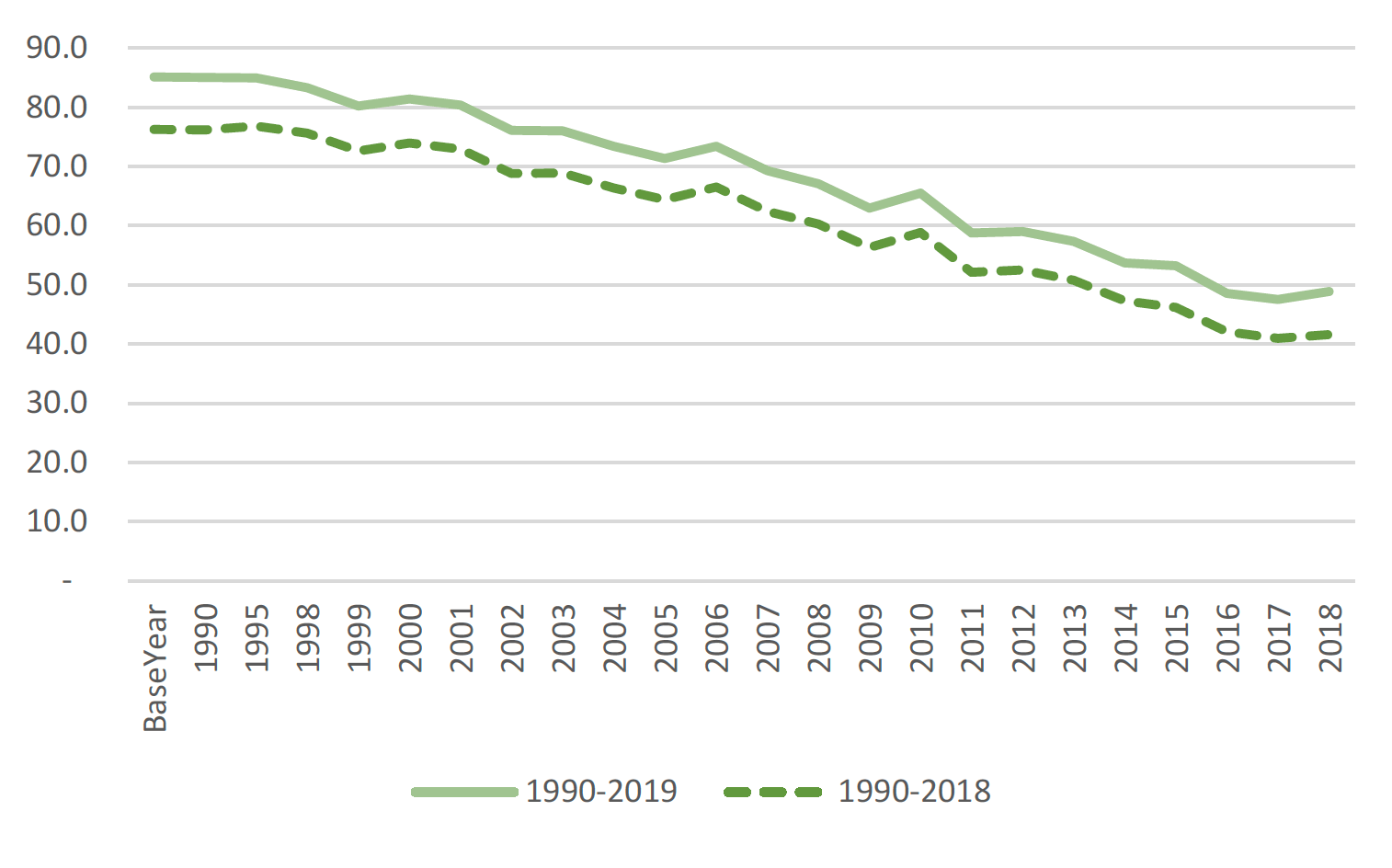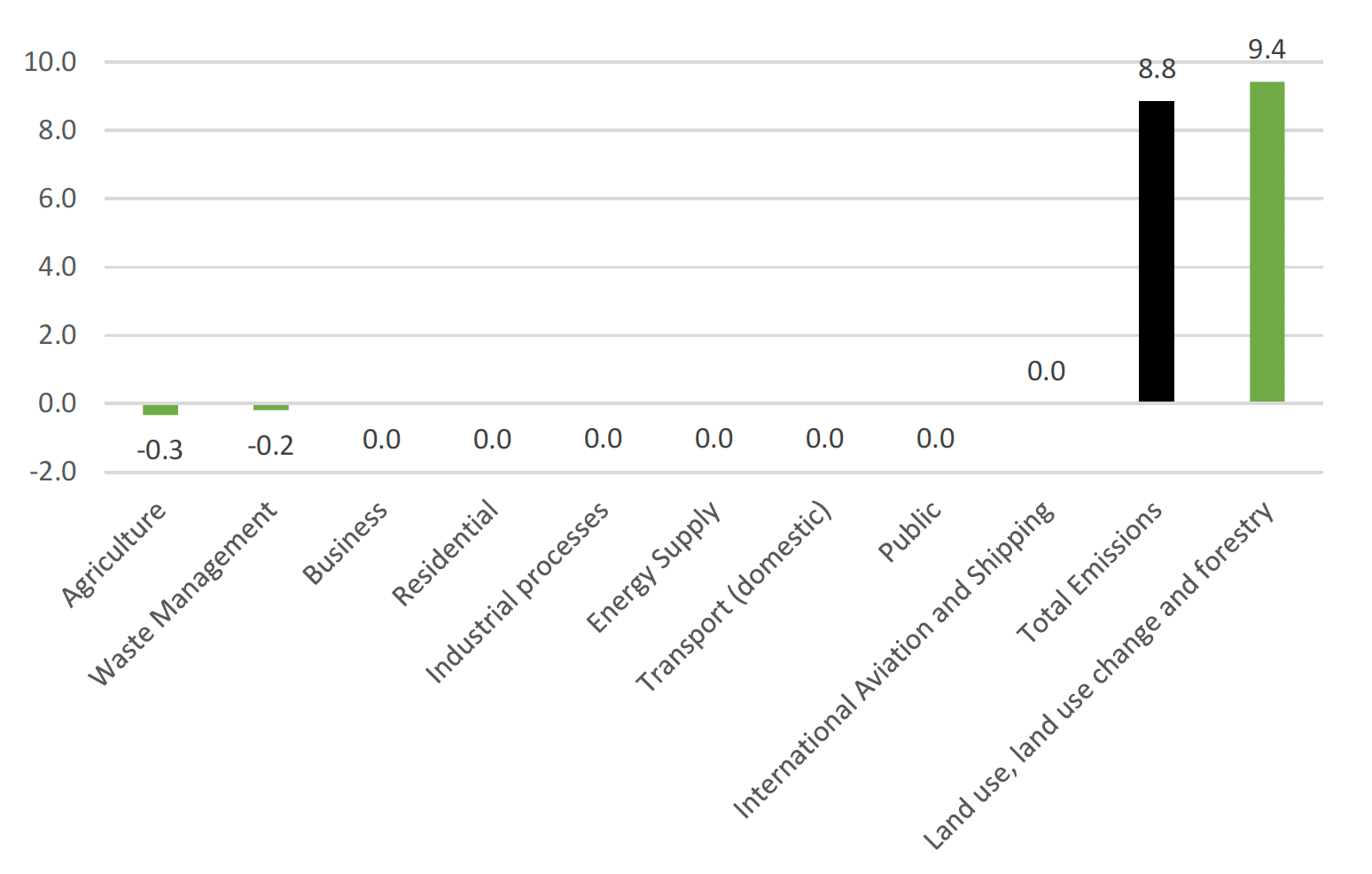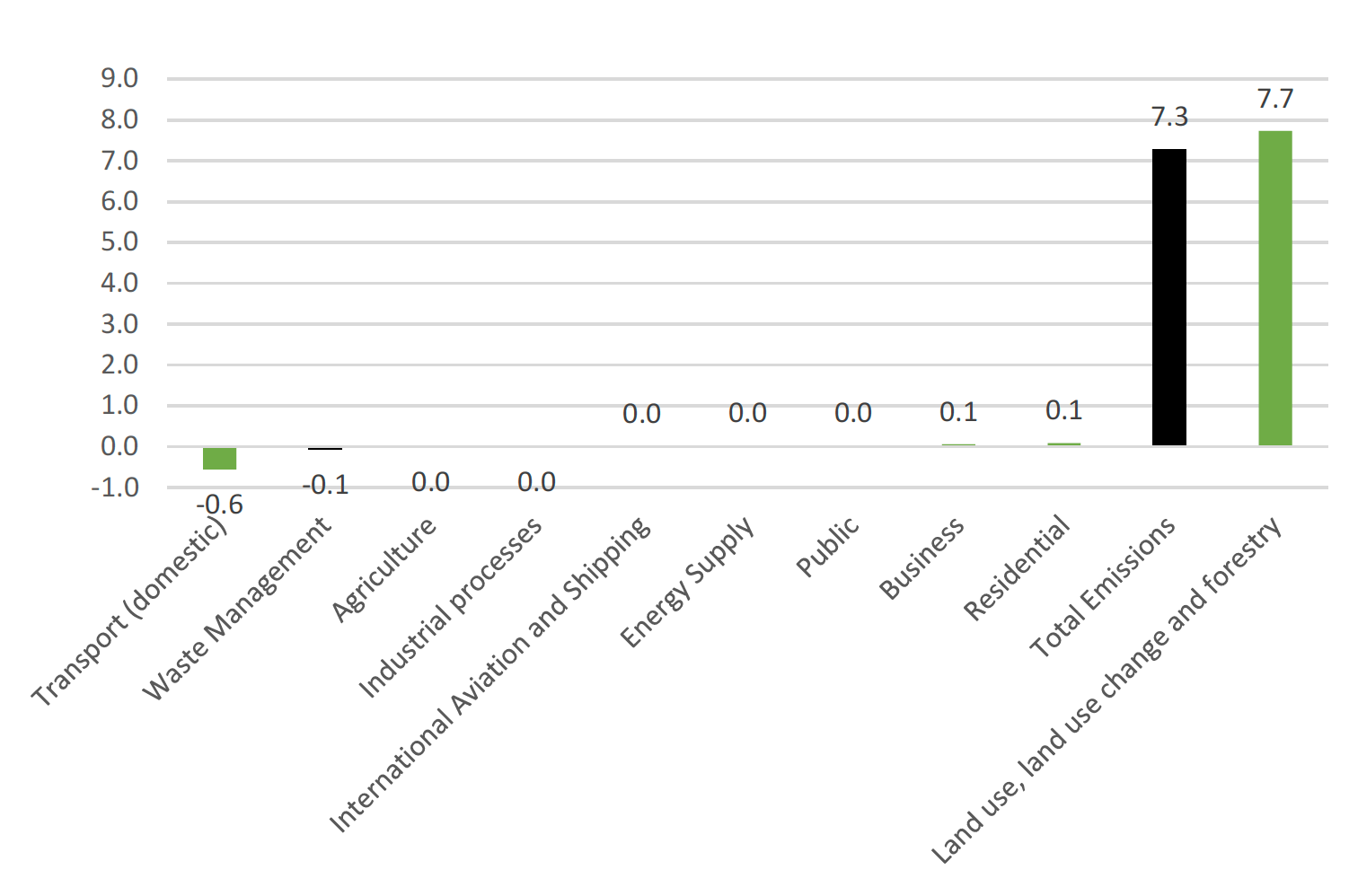Scottish Greenhouse Gas statistics: 1990-2019
The Scottish Greenhouse Gas Inventory is the key tool for understanding the origins and magnitudes of greenhouse gas emissions in Scotland. The inventory is compiled in line with international guidance from the Intergovernmental Panel on Climate Change.
This document is part of a collection
Section D. Revisions to the Inventory and Methodology
This section examines key revisions in estimated source emissions between the latest inventory (1990-2018) and the previous inventory (1990-2017). It also provides a summary of the cumulative impact of revisions since the 1990-2008 inventory. In October 2015, the Scottish Government published a paper Scottish Greenhouse Gas Emissions 2013. Key Revisions Since 2008, which provides a breakdown of the key revisions to the data within the Scottish Greenhouse Gas Emissions Official Statistics publication over successive years from the 1990-2008 inventory to the 1990-2013 inventory. This section of the publication is intended to build on this revisions paper.
Compilation of the Greenhouse Gas Inventory
The greenhouse gas inventory covers a wide variety of anthropogenic sources of greenhouse gas emissions. There is therefore a wide variety of emissions sources which require different approaches to their estimation. There are a large number of data sources used in its compilation, obtained from Government statistics, regulatory agencies, trade associations, individual companies, surveys and censuses. The methods used to compile the greenhouse gas inventory are consistent with international guidance on national inventory reporting from the Intergovernmental Panel on Climate Change.
Most emission estimates are compiled by combining activity data (such as fuel use) with a suitable emission factor (such as amount of CO2 emitted per unit of fuel used). Estimates of emissions from the industrial sector are often compiled based on plant-specific emissions data. Emissions from some sectors are based on more complicated models - such as the model used to estimate emissions from landfill, and the model used to estimate the carbon dynamics in soils when trees are planted. Much of the data on net emissions from 'agriculture' and 'land use, land use change and forestry emissions' are based on modelled data for Scotland, which are consistent with, but not constrained to, the UK totals and thus are known as "bottom up" estimates.
Many of the remaining emissions sources within the inventory have been collated on a "top down" approach where estimates of emissions have been apportioned to Scotland using proportions of energy use in the Department of Business, Energy and Industrial Strategy (BEIS) Publication "Digest of UK Energy Statistics (DUKES)". This approach is prompted by data availability on emissions being more limited at the sub-UK level.
Impact of Revisions
Revisions between the 1990-2018 and 1990-2019 inventories
Charts D1 to D3 illustrate the impacts of revisions between the 1990-2018 and 1990-2019 inventories. This is followed by a discussion of the reasons for the key revisions.

Chart D2 shows revisions to the baseline period, between the two most recent inventories.

Chart D3 shows revisions to the data for the year 2018, between the two most recent inventories.

Details of Main Revisions and Interpretation of Revisions to the Inventory
Revisions to emission inventory estimates reflect the continuous development of scientific understanding of emissive processes, and the improvement to underlying data and methods to generate accurate emission estimates; few revisions to the Greenhouse Gas Inventories arise as a result of 'errors' in the popular sense of the word. The compilation of the inventory is governed by a rigorous quality assurance process and is subject to a great deal of third party scrutiny, such as annual reviews by the UNFCCC of the UK inventory.
The latest published Scotland greenhouse gas inventory (currently 1990-2019) represents the best available data at the time and these supersede any previous data, which should be disregarded.
A complete list of the revisions between the previous and latest inventories can be found in the National Atmospheric Emissions Inventory report Greenhouse Gas Inventories for England, Scotland, Wales and Northern Ireland: 1990 - 2019[7]. Details of the most notable revisions are listed below:
LULUCF revisions
Charts D2 and D3 show a substantial revision to the LULUCF category in both the baseline period and the latest year – affecting all intervening years. As many users will be aware, for a number of years preparations have been made for a fundamental change in the scope of official statistics on emissions for all parts of the UK. These changes were made in response to the implementation into the UK inventory of Intergovernmental Panel on Climate Change (IPCC) 2013 wetlands supplement to the 2006 guidance on the compilation of greenhouse gas emissions data.
This change in scope relates to additional emissions, not previously included in the GHG inventories, associated with the historical drainage and rewetting of peatlands and the impact that such activity has had, and continues to have, on the level of net GHG emissions.
Since the publication of the IPCC wetlands supplement, a programme of research has been undertaken by the UK Government to consider how these new emissions can be measured appropriately. This culminated in the publication of a scientific report in 2019 on the upcoming implementation of wetlands to the GHG inventory.
Agriculture
There have been some relatively small revisions to the early part of the agriculture series', particularly those relating to beef cattle live weights, milk yields, and livestock numbers affect emissions from enteric fermentation and manure management.
Waste management
Emissions estimates have reduced across the whole time-series due to recalculations in Industrial Wastewater Treatment. BEIS commissioned a review of models used to estimate greenhouse gas emissions in 2019 which is now incorporated into the estimates.
Domestic Transport
Emissions from road transport have been revised from 2010 onwards. This is the result of updates to Department for Transport (DfT) minor roads data for these years, which has led to an increase in the estimate of vehicle-kms travelled across all vehicle types on urban and rural roads.
Interpretation of uncertainties in the inventory
All estimates, by definition, are subject to a degree of statistical 'error' but in this context it relates to the uncertainty inherent in any process or calculation that uses sampling, estimation or modelling.
Estimates of greenhouse gases are compiled by a consortium of contractors. The source emissions are based upon a range of data sources, ranging from model based estimates to point source emission data. As a result, the estimates are subject to a degree of uncertainty. Full analyses of these uncertainties are provided on the National Atmospheric Emissions Inventory website[8].
The Scottish Government previously commissioned research to overhaul and update the uncertainties model used for the Scottish greenhouse gas inventory. A detailed study was carried out in parallel with the compilation with the 1990-2014 Scottish greenhouse gas inventory to review and improve the uncertainty calculations. A link to this project and to the full report can be found in the Scottish Greenhouse Gas Inventory Uncertainties Project.
Future revisions to the inventory
Every year, greenhouse gas inventories are updated to reflect improvements in the underpinning science, data and modelling which often result in revisions to the entire time series. These revisions also reflect changes to the Intergovernmental Panel on Climate Change (IPCC) guidelines. The Scottish Government is represented at the UK's National Inventory Steering Committee, where improvements to the Scottish and UK inventories are discussed. There are no significant revisions to future publications known at this time although it is likely that the Scottish GHG inventory will incorporate an adjustment to the global warming potentials for non-CO2 gases in the relatively near future. Once details of this and other revisions are known, we will issue an occasional paper in advance of the main release to inform users of the likely scale of any revisions.
Contact
Email: CCStatsModelling@gov.scot
There is a problem
Thanks for your feedback